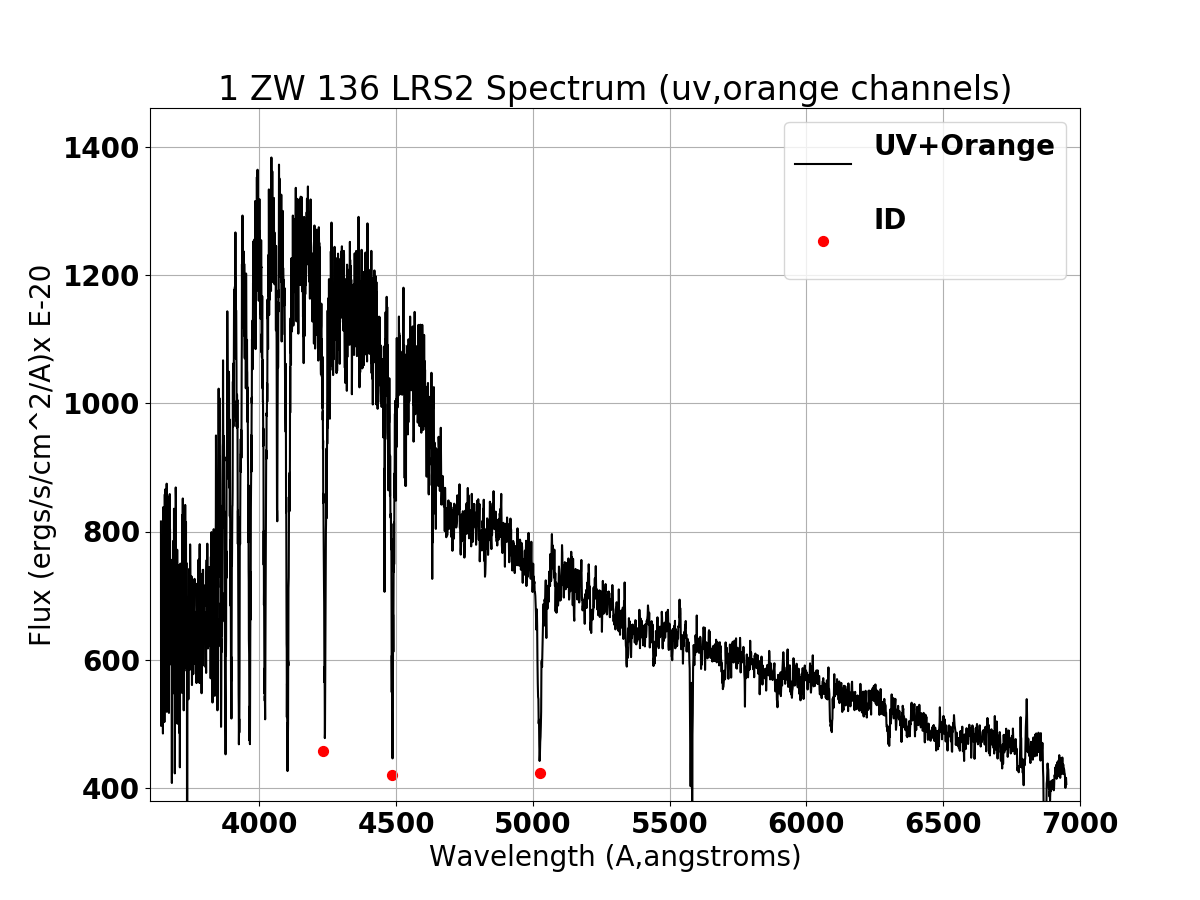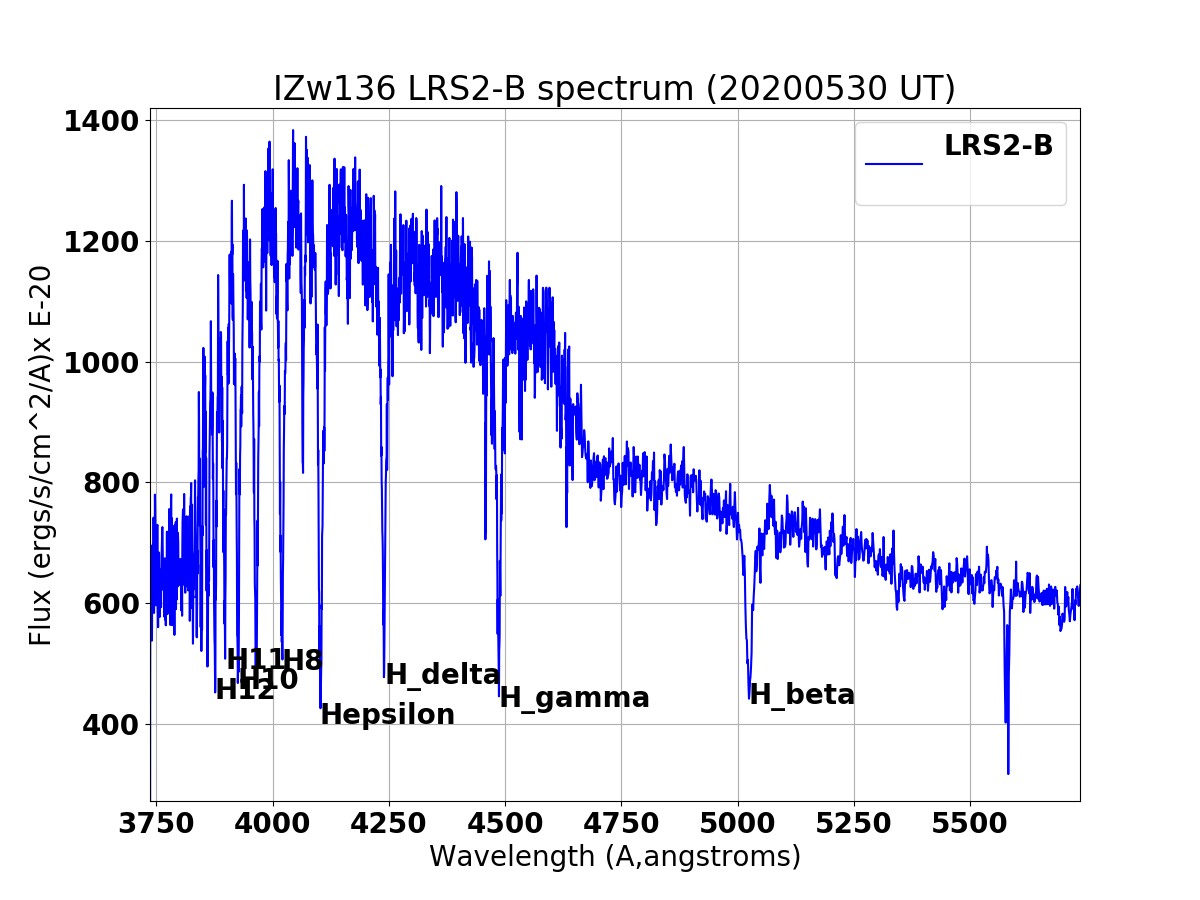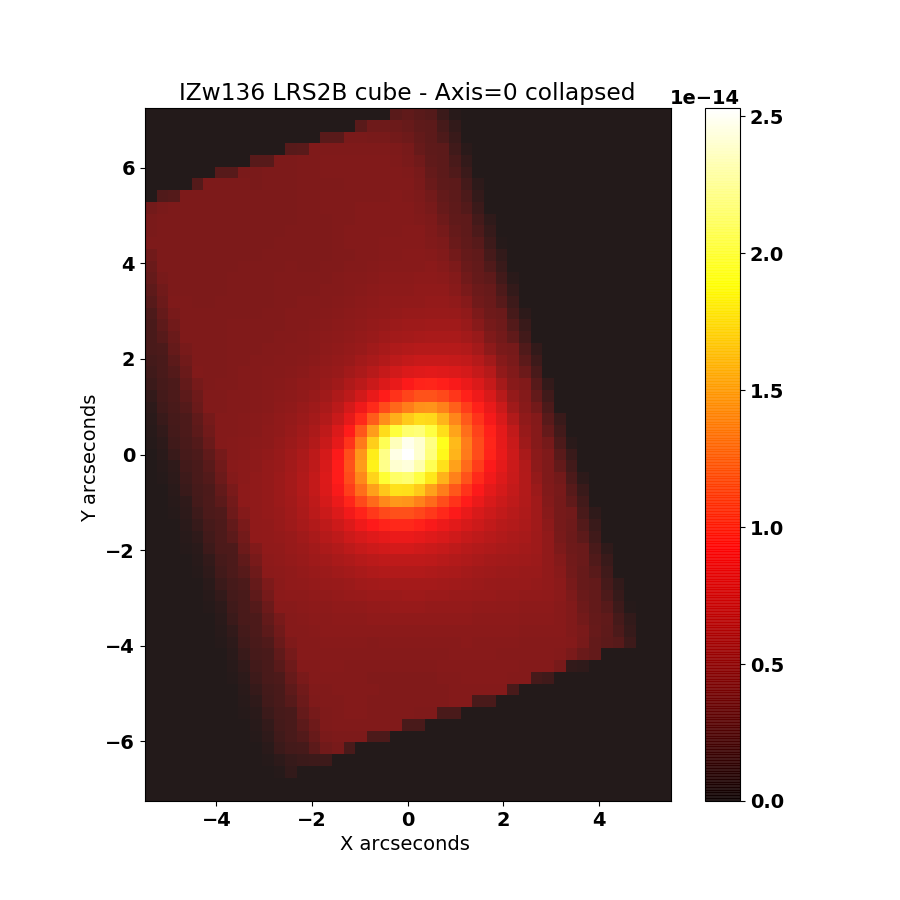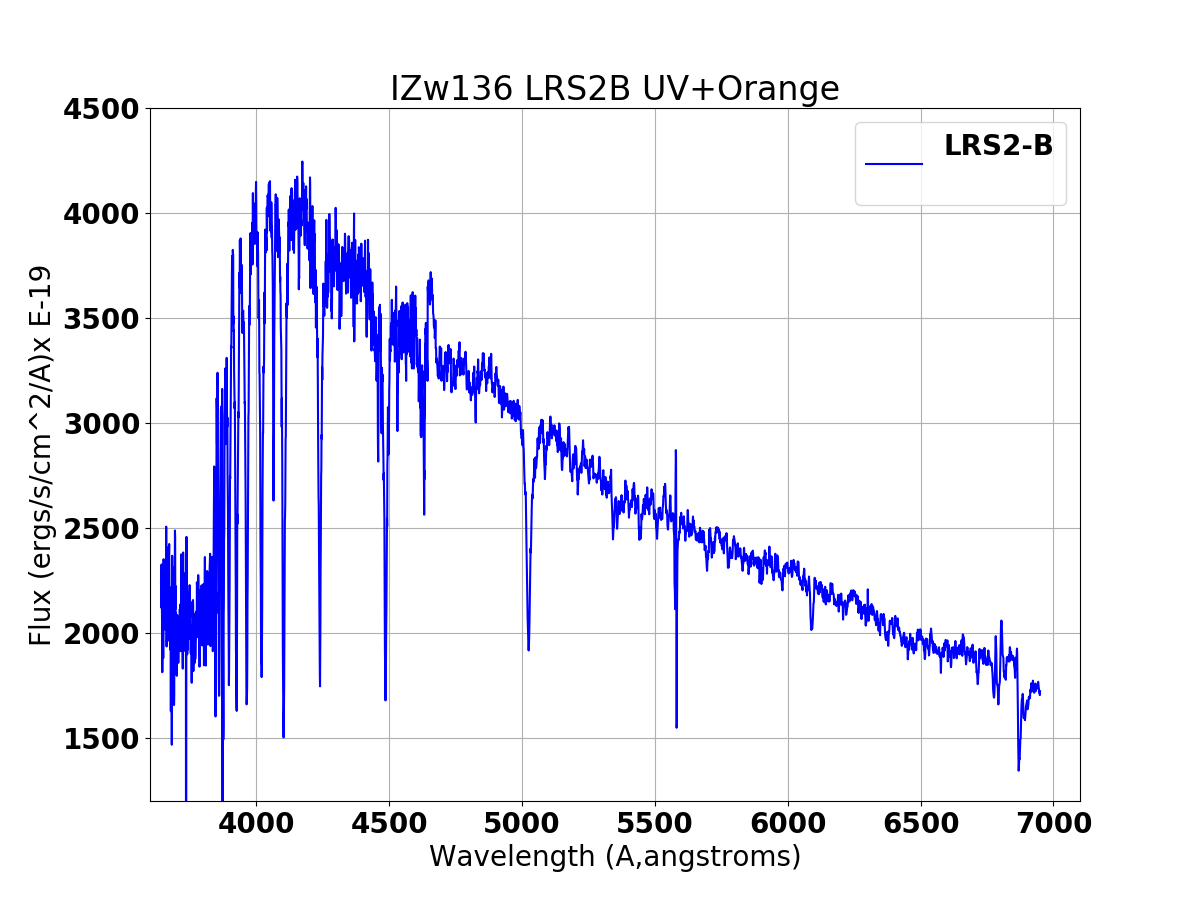Determining Redshifts
Updated: Aug25,2020
Primary List
- Introduction.
- Setting up HET observations with TSL.
- A redshitf for IZw136 from LRS2-B
Introduction.
Here we cover some routines used to measure galaxy redshifts from spectra. Some of the sections
below will deal with setting up and recieving reduced HET spectra, but our primary concern
is this: with a digital galaxy spectrum, how do we identify specralfeatures and
use them to compute the radial velocity of the galaxy? I have three routines that are
useful for this, and you can read online documentation for each with this commands:
% speclines.sh --help # Make a list of spectral features
% redshift.sh --help # Given identified spectral features, compute a mean redshitf
% redshifter.sh --help # Given a redshift, predict observed wavelengths
These routines are used to identify specrtal features with known restframe
wavelenths in a specturm and compute a corresponding radial velocity. The
routine speclines.sh enables us to select
line lists from a library of spectral features. The library started out including just a
few common features for early- and late-type galaxies. It has grown, but basically still enables
the user to access the rest-frame wavelengths and text-style names for spectral lines
The redshift.sh and
redshifter.sh are inverse routines. The first
will compute a radial given a set of identified spectral features, the second
will predict a the observed wavelengths for a set of spectral features given a
radial velocity. To help identify features viaually, I have a developed
spec_selector (a modified version of
the code point_selector ).
I have prepared a simple example of determining a redshift based on the spectrum
present below that S.Janowieki and I observed for Jimi Lowrye in May 2020. In
this simple example I cover how I
use the routines above to compute a redshift given our digital spectrum from LRS2.
Return to top of page.
Setting up HET observations with TSL.
A lot of the spectrum analysis I do uses HET observations. I have
compiled a short set of notes and figures on
setting up HET observations with TSL.
Return to top of page.
An LRS2-B observation of 1Zw136
Here is a Jimi L observation.
% redshitf.sh --help
 |
A 1-D spectrum from UV and Orange channels of a 20200529 LRS2-B spectrum
of 1 ZW 136 (Ra,Dec = 16:13:30.19 +51:03:35.6) is shown. I have identified 3 lines
that are marked by the red circles: from right to left thay are H_beta,
H_gamma, and H_delta. The continuum for this specturm appears to be much to
vlue for an ordinary E+A galaxy, but I simply wanted to see how close these
identifications, made manually with an interactive plotting routine, might agrree.
The results are summarized below:
Wave_obs Wave_rest Feautre Vobs(km/s)
4238.900 4101.740 H_delta 10031.8
4486.300 4340.470 H_gamma 10079.3
5025.100 4861.330 H_beta_L 10106.5
Mean Velocity = 10072.534 -+ 21.822 km/s
The mean error of ±21.8 km/s is surprisingly small.
|
Later I refined the LRS2 spectrum plotting process and I now have the
results below.
 |
A 1-D spectrum from UV and Orange channels of a 20200529 LRS2-B spectrum
of 1 ZW 136 (Ra,Dec = 16:13:30.19 +51:03:35.6) is shown. I have identified 8
Balmer absorption lines that are labeled above. The continuum for this specturm
appears to be much bluer than for an ordinary E+A galaxy, but the feature identifications
seem secure. Rejecting the H_epsilon line, the final table of radial velocity values is shown below
Wave_rest Feautre Wave_obs V(km/s)
4101.74 H_delta 4239.69 10082.46
4340.47 H_gamma 4484.69 9960.98
4861.33 H_beta 5023.62 10008.04
3750.15 H12 3875.03 9982.75
3770.63 H11 3897.95 10122.78
3797.90 H10 3924.75 10012.76
3889.05 H8 4018.96 10014.48
Mean Velocity = 10026.3 ± 21.5 km/s
mean redshift, z = 0.0334 ± 0.0001
|
In Aug2020 I spent some time studying up on numpy (see NumPy Studies
and in the course of that I developed gregz_002.py (a modified version of a simple GregZ code). I
used this to analyza and play with the data cube from Greg that combines the ouv and orange channels
into one data cube. I used this two make the two plots below.
See notes in /home/sco/jimiL/red_Aug25_2020/Aug25_01/README.red_Aug25_2020
Data cube = eng_galaxy_1_LRS2B_cube.fits
% python gregz_002.py
% cp spectrum.dat spectrum.dat_sco
% vi spectrum.dat_sco # just remove header stuff
% cubespec.sh spectrum.dat_sco
Flux min,max = -0.2713111E-15 0.4244979E-15
Enter desired exponent (-14): -19
4727 3
Resulting file = spectrum.table (and params,parlab files)
% mkdir plot1
% cd plot1
% cp ../spectrum.table .
% cp ../spectrum.parlab .
% Generic_Points N
% getrc
% xyplotter_auto spectrum wave flux 1 N
% xyplotter List.1 Axes.1 N
 |
|
GregZ's data cibe (eng_galaxy_1_LRS2B_cube.fits) was collapsed with gregz_002.py to give
an integrated light image covering signal from 3640 angstroms to 6949 angstroms.
|
 |
|
IZw136 LRS2-B spectrum extracted with R=1.5 arcsecond circular aperture.
|
Return to top of page.
Back to calling page



